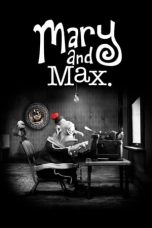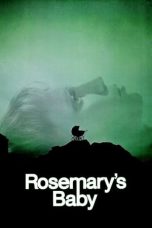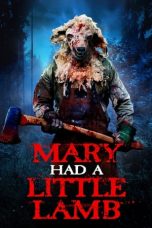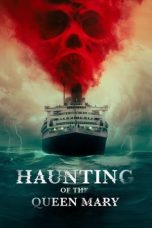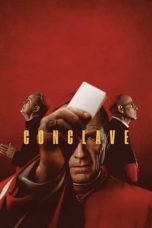- Source: Mary Immaculate of Lourdes Church (Newton, Massachusetts)
Mary Immaculate of Lourdes Church, formerly referred to as St. Mary's, is a Roman Catholic parish of the Archdiocese of Boston located in Newton Upper Falls, Massachusetts. The fourteenth and current pastor is Fr. Charles Jeremiah Higgins. The parish is known locally for its rich liturgical life, and in particular as one of the few Boston parishes to offer the Tridentine Mass. The church forms part of the Newton Upper Falls Historic District, listed in the National Register of Historic Places.
History
= Early Years
=The first Mass in Newton Upper Falls was celebrated by Fr. James Strain of Waltham in the home of James Cahill in Chestnut Street in the year 1841. Prior to this, it seems that Mass was celebrated for a railroad gang in Newton Lower Falls by Fr. Thomas O'Flaherty as early as 1832. This first permanent congregation, consisting mainly of Irish factory workers, was scarcely large enough to fill a room and was served as time allowed by the priests of St. Mary's parish in Waltham, with greater regularity from 1844 onward. Fr. Bernard Flood was officially appointed missionary to the Newton congregation in 1852, and around this time funds began to be collected for the purpose of constructing a church. Sunday services were infrequent until about the year 1860, when the congregation abandoned the Cahill home and began to meet in the nearby Elliot Hall in High Street. In 1867, Rev. John McCarthy succeeded Fr. Flood as missionary to the Upper Falls congregation, which numbered about 300 by this time.
= St. Mary's Church
=When Fr. John McCarthy became responsible for the mission of Newton Upper Falls, he immediately began to plan the construction of a church with the money raised for that purpose by his predecessor, Fr. Flood. By 1864 a plot of land had been purchased on the east side of Chestnut Street. A wood frame gothic church was built soon after. The church was called St. Mary's and was consecrated by Archbishop Williams on November 17, 1867.
In 1870, St. Mary's was made its own parish and Fr. Michael X. Carroll was appointed pastor. Fr. Carroll had time to begin the construction of a rectory beside the church before he was succeeded in 1871 by Fr. Michael Dolan.
By 1875, St. Mary's already proved too small for the growing congregation, so a transept was added, increasing the seating capacity to 1,000. Upon the completion of this addition, the church was rededicated by Archbishop Williams on April 30, 1876, with Bishop James Augustine Healy of Portland delivering the sermon. Fr. Dolan was responsible for a number of other capital improvements, including the digging of a basement, the addition of frescoes, the installation of a slate roof, and the purchase of a new Hook & Hastings organ. Around this time, Fr. Dolan purchased several plots of land adjacent to the church campus with the intention of one day constructing a school and convent. During Fr. Dolan's pastorate, the congregation numbered roughly 1,500 and embraced Needham, Newton Upper Falls, Newton Lower Falls, and Newton Centre south of Beacon Street.
Rev. Martin O'Brien succeeded Fr. Dolan as pastor in October, 1885. Fr. O'Brien administered the parish with zeal to rival his predecessor's, and was responsible for the purchase of more adjoining land, for the continued embellishing of the church and the grounds, and for the payment of all parish debts. He served as pastor until his death in 1890 and was buried on the grounds of the church, eventually being reinterred in St. Mary's Cemetery when the Chestnut Street property was sold. Following the death of Fr. O'Brien, the parish had grown to such a size that division was necessary, and separate parishes were established for Newton Lower Falls and Newton Centre.
= The Pastorate of Fr. Danahy
=The Rev. Timothy J. Danahy became pastor of St. Mary's upon the death of Fr. Martin O'Brien in November 1890. Fr. Danahy, whom an official diocesan history describes as "a pronounced example of the strong and original characters to be found among the pastors of the 'old school,'" was born on December 8, 1846 in Killarney, County Kerry, Ireland. His family emigrated to America during the years of the potato famine and settled in Roxbury, where Fr. Danahy received his early education. He studied for the priesthood at Holy Cross College and St. Joseph's Seminary and College and was ordained on December 22, 1877. Following assignments in South Boston and Quincy, he was made pastor of St. Mary's in 1890. Fr. Danany continues to be the subject of many parish legends, some of which were preserved in eyewitness accounts gathered for the parish history privately published in the year 2000. Known for his sternness and eccentricity, he made the rounds of his parish on horseback long after automobiles became commonplace, always followed by his two faithful St. Bernards. The dogs were named Christmas and Easter, though it seems that Christmas's name was eventually changed to Winter for unknown reasons. A story still oft repeated in the parish tells of the death of one of these dogs. At the very least, it is certain that Fr. Danahy persistently mentioned his late pet's name when reciting the prayers for dead parishioners after Mass; some go so far as to allege that Fr. Danahy actually celebrated a solemn requiem Mass for the dog and announced plans to inter it in the parish cemetery, exciting the ire of Cardinal O'Connell. Fr. Danahy was responsible for embellishing the church and for introducing many devotions long before they became commonplace in the diocese, notably the blessing of the throats for the feast of St. Blaise. Fr. Danahy took a special interest in catechising the children of the parish. It was his ardent desire to see all the children attend Mass every morning, and he was always on the lookout for any who might try to elude his watchful eye on their way to school, in which event it was not uncommon for Fr. Danahy to drag them bodily into the church. Fr. Danahy himself presided over the Sunday School, which commonly lasted from two to three hours or more on Sunday afternoons. He had a particular fondness for demonstrating the rituals of the Church to the children. Up until the end of the 20th century, there were still elderly parishioners who remembered Fr. Danahy's mock baptisms conducted with a large doll, his demonstrations of the Last Rites enacted over a child-volunteer lying on a table in feigned sickness, and, a favorite among the children, the make believe weddings of the Sunday School students. In his zeal to promote Mass attendance, Fr. Danahy was in the habit of roping off the pews in the back of the church to force congregants to sit in front, and of locking the doors of the church promptly at the hour Mass was to begin so as to discourage latecomers. Fr. Danahy was a hoarder of antiques, some of them of great value, and by the time of his death the rectory was so crowded with them that it was scarcely possible to move about. On the day of Fr. Danahy's unexpected death in 1923 at the age of 76, Cardinal O'Connell arrived at the rectory and appropriated the great majority of the antiques into his own collection. Fr. Danahy's obituary described him as "a disciplinarian at all times, strict to himself and those around him, and at all times a student." The crowning achievement of his 33-year pastorate was the construction of the present church in fulfillment of a vow made at Lourdes.
= Present Church: Mary Immaculate of Lourdes
=Sometime in the 1890s, Fr. Danahy made a pilgrimage to Lourdes to request the miraculous healing of his failing eyesight. This favor was granted him, and in gratitude he vowed to build the most beautiful church in the diocese in honor of Mary Immaculate of Lourdes. Fr. Danahy had already overseen the construction of a new gothic church for the mission of St. Joseph's in Needham, which at that time was a dependency of Saint Mary's. In view of the construction of a new and larger edifice for Saint Mary's, the Newall Estate was purchased at the corner of Elliot and Oak Streets, several blocks from the existing church at the crest of a hill in the heart of the historic Newton Upper Falls village. Some of the additional land at the Chestnut Street property was sold at this time to raise funds. An architect, Edward T. P. Graham was engaged, and ground was broken in 1909. Parish oral tradition maintains that Fr. Danahy's own sketches and suggestions heavily influenced the design down to the minutest details. The church was completed the following year and consecrated by Cardinal O'Connell on Thanksgiving Day, November 24, 1910. The construction of the church cost $150,000, an enormous sum for the time, as Fr. Danahy had spared no expense in the fulfillment of his vow. Fr. Danahy continued to serve as pastor until his death on November 5, 1923. By the time of his death, Fr. Danahy had not only succeeded in fulfilling his vow to build a church in honor of Our Lady of Lourdes; he had also succeeded in paying off the entire debt associated with its construction. At the time of the construction of the new church, the congregation numbered approximately 1,500 people.
= 20th Century
=Fr. Dennis H. Donovan, who had been Fr. Danahy's curate, became pastor upon the latter's death in 1923. Fr. Donovan was responsible for the installation of a 500 seat chapel in the basement of the new church. This chapel incorporated the pews, confessionals, and Stations of the Cross from the original St. Mary's, which was converted into a parish hall at this time. A parish history relates that Fr. Donovan was a large and genial man, ideally suited in temperament to cope with life as Fr. Danahy's curate. Like his predecessor, Fr. Donovan had a fondness for dogs, and could often be seen driving his automobile around Newton with his chihuahua on the seat beside him.
Fr. Donovan was succeeded in 1935 by Fr. William J. O'Connell, who served as pastor until 1950. He supervised the construction of the present rectory in Elliot Street and purchased the adjoining Cowen house, an historic Greek Revival home, for use as a parish center. The remaining property of the original church campus in Chestnut Street was sold during his pastorate. The original church no longer stands, but the rectory completed by Fr. Dolan remains, as well as the original stone walls which encircled the property. In 1950 Fr. Alexander McCarthy was named pastor but lived only four months. He was succeeded by Monsignor John R. Wall. Msgr. Wall modernized the lower church and completed work on the parish center acquired by Fr. O'Connell, which was christened the Saint Elizabeth Center. Msgr. Wall instituted Rosary devotions in May and October and was zealous in promoting social and fundraising activities. Msgr. Wall was succeeded in 1957 by Msgr. Daniel F. Riordan, who served as pastor until 1970, the centennial year of the parish. Fr. Michael F. Doocey was named pastor in 1970 and immediately began significant renovations to the interior of the church in response to the liturgical reform following the Second Vatican Council. Fr. Doocey served as pastor until 1993, when he was succeeded by Fr. Joseph L. Welsh. Fr. Welsh only remained as pastor for two years before he was succeeded by the Rev. Stephen A. Koen. Fr. Koen's pastorate lasted until 2002, when he was followed as pastor by Fr. Kenneth A. LeBlanc.
= 21st Century
=In 2004, following years of economic and demographic decline common to many smaller parishes in the area, the Archdiocese of Boston placed Mary Immaculate on the list of churches designated for possible closure as part of the larger restructuring of the diocese at that time, exciting protest both from the small group of remaining parishioners and from local civic groups who wished to see the historic church saved. Following several years of suspense, in 2006 Cardinal O'Malley announced a new plan: Mary Immaculate would remain open as a non-territorial parish with the specific mission of serving the Tridentine Mass community, particularly the congregation which had been displaced by the closure of Holy Trinity Church in the South End. Thus the parish was saved from extinction in the 136th year of its existence. Fr. Charles J. Higgins, a diocesan priest with experience serving the Tridentine Rite community at Holy Trinity, was named pastor in January 2007. He immediately began needed renovations, including repairing the roof, restoring the 3 historic church bells to working order, and constructing a parish hall in the disused lower church space. Significant restorations were undertaken in the church's interior to restore the original, Tridentine configuration: the tabernacle and a relief sculpture depicting the Last Supper were restored to their original places in the high altar, the marble Novus Ordo altar was replaced with a moveable wooden one, the altar rail and side altars were restored, confessionals were constructed, and a background mural was commissioned for the Lourdes shrine in the interior of the bell tower to replace one which had been painted over in the 20th century. Fr. Higgins oversaw the sale of the former St. Elizabeth Parish Center, which had fallen into a state of disrepair and had been rendered unnecessary by the construction of the parish hall, as well as some surplus land at the parish cemetery, thus stabilizing the finances of the parish. With the arrival of the Tridentine Mass, the parish began to flourish as it had in former times, and today it is a destination for Catholics from across the diocese who wish to participate in its rich liturgical life and burgeoning community.
Architecture
The church is designed in the Romanesque style with Italianate features. The church was designed by prominent local church architect Edward T. P. Graham with significant involvement of the pastor, Fr. Danahy. The frescoes in the church's interior, depicting the 12 Apostles in the nave and the Annunciation, the Assumption, and the Coronation of Mary in the apse, were executed by Gonippo Raggi in 1910. The stained glass, which parish oral tradition maintains were also largely designed by Fr. Danahy, are the product of the Franz Xaver Zettler Studios of Munich. The church boasts three altars of white marble, and a communion rail of red marble and copper. The bell tower is 135 feet in height, the exact height of the pinnacle of the Temple of Jerusalem, and houses the three original bells, named for St. Elizabeth, St. John the Baptist, and St. Gabriel. The facade of the church in the Neoclassical style boasts four Corinthian columns, and the gable displays a relief sculpture depicting the apparition of Our Lady of Lourdes.
Liturgy
Mary Immaculate of Lourdes is known throughout the diocese for the richness of its liturgical life, which attracts regular parishioners and visitors from far and wide. Mass is offered daily in the Novus Ordo and the Tridentine Rite. On Sundays and feasts, liturgies are accompanied by a choir of professional musicians from Greater Boston's rich culture of professional music, under the able direction of Mrs. Bobbie Hoffman. On Sunday, the 7:30 AM and 9 AM Masses are sung Novus Ordo Masses, and the 11 AM Mass is a Solemn High Mass in the Tridentine Rite. Each year the full ceremonies of Holy Week are offered in both the Novus Ordo and the Tridentine Rite.
Parish Cemetery
Shortly after St. Mary's Parish was founded in 1870 to serve the Catholics of Newton and Needham, Fr. Michael Dolan purchased a tract of land - "God's Thirty Acres" - in Needham to serve as a parish cemetery. Although the parish of St. Mary's was renamed "Mary Immaculate of Lourdes" at the consecration of the new church building on Thanksgiving Day, 1910, the parish cemetery retained its original name of St. Mary's. Much of the work to clear and construct the cemetery was done by hired and volunteer parishioners. During the Long Depression, Fr. Dolan employed the needy of the parish at $1 per day to build walls, construct driveways, and perform other necessary work. Fr. Timothy Danahy inaugurated the celebration of Mass at the cemetery on Memorial Day, a custom which continues to the present. The cemetery is the final resting place of several of the clergy who have served the parish of Mary Immaculate over the years, including Fr. Timothy Danahy, who built the present church, his successor Fr. Dennis Donovan, and Fr. Martin O'Brien, who was originally buried on the grounds of the old Saint Mary's Church in Chestnut Street. St. Mary's Cemetery continues as an active cemetery to this day, serving the Catholic parishes of the greater Newton and Needham area.
Mass times
Holy Days: as announced
List of pastors
Vocations
= Diocesan priests/deacons
=Rev. Michael E. Begley, deceased
Rev. William S. Carpenger
Rev. Richard F. Cronin
Rev. Msgr. Edmund Daley, deceased
Rev. William J. Melea
Rev. Joseph Meredith, deceased
Rev. Thomas F. Motherway, deceased
Rev. Msgr. Francis J. Murphy
Rev. Msgr. John E. Murphy
Rev. Robert F. Reardon
Rev. Bernard J. Smith, deceased
Rev. John E. Sheridan
Deacon George Messinger
= Religious priests
== Religious sisters
=References
External links
https://www.maryimmaculateoflourdesnewtonma.org/
Kata Kunci Pencarian:
- Daftar katedral Katolik di Amerika Serikat
- Daftar katedral di Amerika Serikat
- Daftar seniman Katolik
- Mary Immaculate of Lourdes Church (Newton, Massachusetts)
- Gonippo Raggi
- Newton Upper Falls
- List of Catholic universities and colleges in the United States
- List of churches in the Roman Catholic Archdiocese of Boston
- Richard Henning
- Maginnis & Walsh
- Roman Catholic Diocese of Worcester
- Edward T. P. Graham
- Christopher J. Coyne
Haunting of the Queen Mary (2023)
The Miracle Club (2023)
The Count of Monte-Cristo (2024)
Maze Runner: The Scorch Trials (2015)
No More Posts Available.
No more pages to load.
